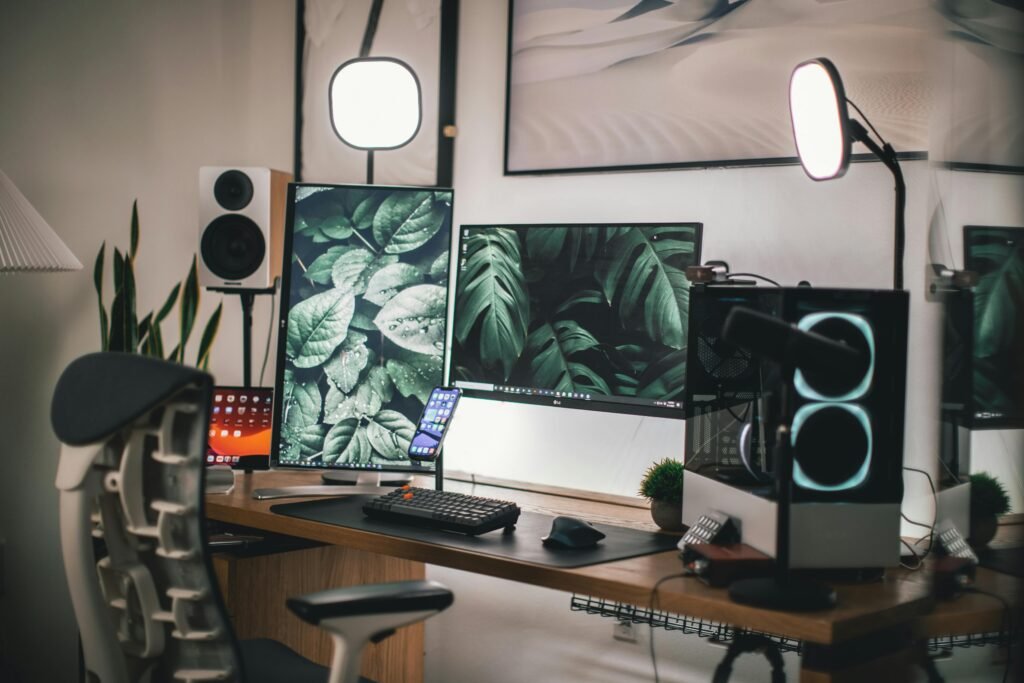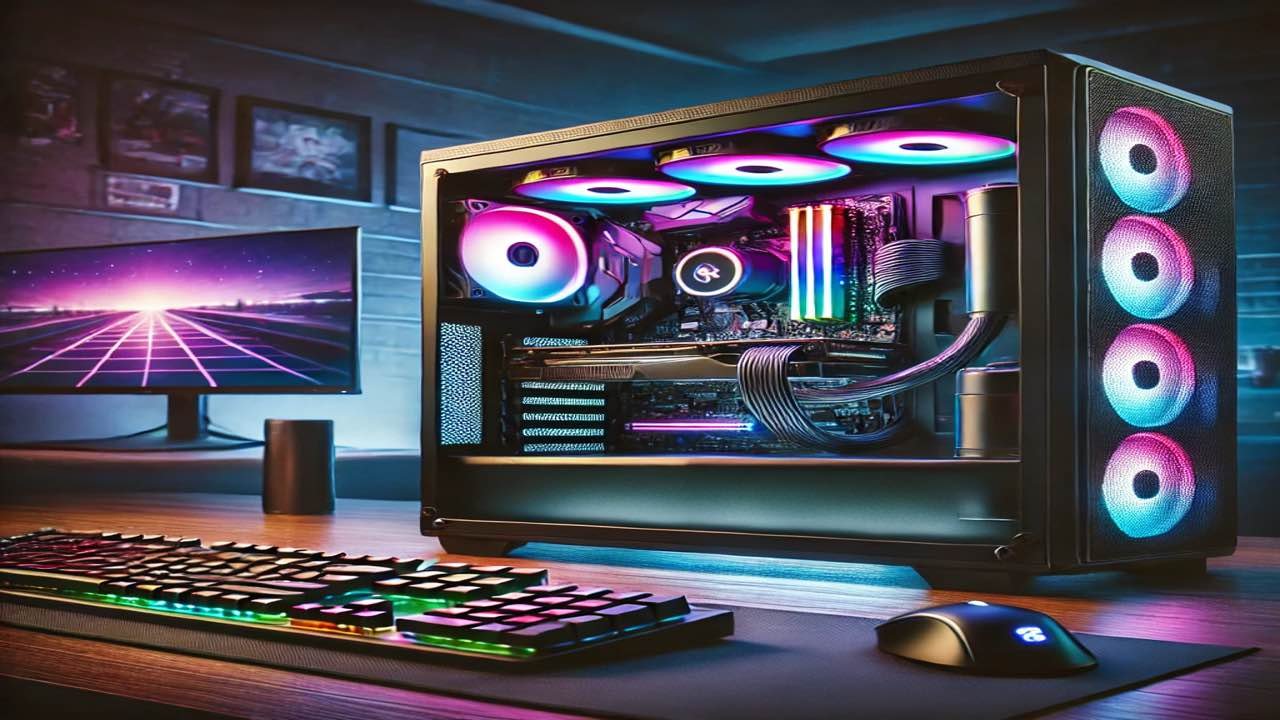Building your gaming computer is an exciting and rewarding project. It allows you to customize every component and helps maximize performance for your favorite games. However, knowing how to build a PC gaming computer requires careful planning and understanding of the key elements. Here’s a comprehensive guide to help you make informed decisions and create a powerful gaming rig.
Table of Content
- 1. Define Your Budget
- 2. Choose the Right Graphics Card (GPU)
- 3. Select a High-Performance Processor (CPU)
- 4. Pick the Right Motherboard
- 5. Get Sufficient RAM
- 6. Choose Fast Storage: SSD vs. HDD
- 7. Cooling System
- 8. Power Supply Unit (PSU)
- 9. Case and Aesthetics
- 10. Operating System and Peripherals
- Should I Buy a Gaming PC or Build One?
- Final Thoughts

1. Define Your Budget
Before diving into the technical details, establish a budget. Gaming PCs can range from budget-friendly builds under $800 to premium setups exceeding $3,000. Knowing your spending limit will help prioritize where to invest the most—typically in the graphics card (GPU) and processor (CPU).
Expert Tip: Don’t forget to allocate funds for accessories like a monitor, keyboard, and mouse.
2. Choose the Right Graphics Card (GPU)
The GPU is arguably the most critical component for gaming. It determines the level of detail, resolution, and frame rates your system can handle.
- Popular Options: NVIDIA GeForce RTX 4070 or AMD Radeon RX 7900 XT
- Consider VR-Ready GPUs if you plan to explore virtual reality gaming.
Recommendation: For more on top GPUs, check out our authoritative guide on Best Graphics Cards for 2025.
3. Select a High-Performance Processor (CPU)
While the GPU handles graphics, the CPU manages overall system performance. Choose a processor that balances power and cost.
- Popular Choices: AMD Ryzen 7 7800X or Intel Core i7-13700K
Ensure the CPU is compatible with your motherboard and offers good overclocking potential if you plan to push performance limits.
4. Pick the Right Motherboard
The motherboard connects all components of your PC. It determines compatibility for the CPU, RAM, and storage.
- Chipset and Socket: Match the motherboard’s socket type with your chosen CPU.
- Features: Look for USB-C ports, built-in Wi-Fi, and PCIe 5.0 support for future-proofing.
5. Get Sufficient RAM
Modern gaming PCs should have at least 16GB of DDR5 RAM, although 32GB is ideal for future-proofing and multitasking.
Pro Insight: Look for RAM with faster clock speeds for better performance.
Find a good deal on Amazon
6. Choose Fast Storage: SSD vs. HDD
Solid State Drives (SSDs) offer faster boot and load times compared to traditional Hard Disk Drives (HDDs).
- Best Setup: Use a smaller SSD (500GB or 1TB) for the operating system and frequently played games, and a larger HDD for bulk storage.
WD Black is considered the top-rated SSD, you can find it on Amazon.
7. Cooling System
Keeping your components cool is essential for performance and longevity. Choose between air cooling or liquid cooling systems based on your build’s power.
- Air Coolers: Budget-friendly and easy to install.
- Liquid Cooling: Superior heat management, ideal for high-end builds.
Note: Effective cooling extends component lifespan.
8. Power Supply Unit (PSU)
The PSU delivers power to all your components. Select a reliable unit with sufficient wattage.
- Recommendation: Use a PSU calculator to estimate your needs, then choose a model with an 80 Plus Gold or Platinum certification.
9. Case and Aesthetics
Choose a case that accommodates your components and provides good airflow. RGB lighting, tempered glass panels, and cable management options enhance the build’s appearance.
Advice from Experts: Ensure your case has enough room for future upgrades.
10. Operating System and Peripherals
Don’t overlook software and accessories:
- Operating System: Most gamers opt for Windows 11.
- Monitor: Choose based on resolution and refresh rate.
- Peripherals: Mechanical keyboards and high-DPI mice enhance gameplay.
Should I Buy a Gaming PC or Build One?
One common question among gamers is whether to buy a prebuilt gaming PC or build one from scratch.
- Buying a Prebuilt Gaming PC: It’s a quicker and simpler solution, ideal for those with limited technical knowledge. Prebuilt systems come with warranties and professional assembly, but they often cost more and offer fewer customization options.
- Building Your PC: This option allows full customization and better performance per dollar. However, it requires time, research, and assembly skills.
Conclusion: Building is ideal for enthusiasts seeking maximum value and control while buying suits those who prioritize convenience.
Final Thoughts
Building your gaming PC gives you control over performance and design. By considering these factors, you can create a system tailored to your gaming preferences.
Internal Link: Check out the latest expert-reviewed gaming peripherals on 3MGadgets.
